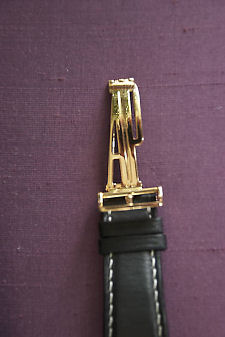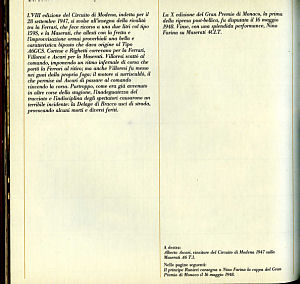"Maseratisti,
Now I am sure that you are all aware that the Maserati factory is sited at 322, Viale Ciro Menotti, Modena, Italy. But have you ever wondered what or who Ciro Menotti was?
I searched through the net and the best answer I could come up with was this, my translation of the Italian text I found courtesy of www.wikipedia.it.
It's a fascinating story!
Enrico."
 Ciro Menotti (1798-1831) - Italian Patriot Ciro Menotti (1798-1831) - Italian Patriot
Ciro Menotti was born in Migliarina, near Carpi, then part of the Duchy of Modena and Reggio.
A member of the Carboneria from 1817, he was a fervent democrat and patriot. The ‘Carbonari’, founded in early 19th-century Italy, were groups of secret revolutionary societies. Their goals were patriotic and liberal, and they played an important role in the ‘Risorgimento’ and the early years of Italian nationalism. From 1820 he held meetings with French intellectuals, with the goal of liberating Modena from Austrian oppression.
Initially, Duke Francis IV declared support for Menotti's aims, prompted by the possibility of becoming king of a future unified Northern Italy. Menotti organised a revolt in Modena for February 3, 1831, but in an abrupt about-turn, the Duke withdrew his support, and summoned the help of Austria and its allies from his voluntary exile in Mantua.
Menotti was arrested and after a summary prosecution, condemned to death by hanging. The sentence was carried out in the Citadel of Modena.
Subsequently, Menotti became the idealized figure of a patriotic martyr of the Italian ‘Risorgimento’ ("The Resurgence"); the political and social movement whose aims were the unification of the different states of the Italian peninsula into the single nation of Italy.
 Modena was at that time governed by Duke Francis IV of Hapsburg-Este, Archduke of Austria. He considered the Duchy of Modena too small for his ambitions. He developed diplomatic relationships with several small European states and presided over a flamboyant court as if he were a great monarch. This explained his interest in the revolutionary movement growing in Italy; on the one hand he feared them, hardly ever acted against them. On the other, he flattered them, in the hope of taking advantage of their actions to fulfill his own personal ambitions. Modena was at that time governed by Duke Francis IV of Hapsburg-Este, Archduke of Austria. He considered the Duchy of Modena too small for his ambitions. He developed diplomatic relationships with several small European states and presided over a flamboyant court as if he were a great monarch. This explained his interest in the revolutionary movement growing in Italy; on the one hand he feared them, hardly ever acted against them. On the other, he flattered them, in the hope of taking advantage of their actions to fulfill his own personal ambitions.
When approached by Menotti, Francis IV didn't oppose the revolutionary plan: it could be that there had been firm agreements made between the two via another liberal, public notary Enrico Misley, a frequent visitor to the Duke's Court.
No one understood why Francis IV, who knew Menotti very well, didn't have him arrested immediately, as he had done back in 1820 with forty-seven Carbonari, who were tried and found guilty, and like the cleric Don Giuseppe Andreoli, condemned to death.
In January 1831, Menotti had organized an uprising down to the last detail, seeking out the popular support and approval of the newly found liberal groups who were emerging throughout the Italian Peninsula. On 3rd February 1831, after having collected an arsenal, Menotti assembled a group of forty fellow conspirators at his house, a short distance from the Grand Duke's palace, in order to organize the revolt.
The Duke, however, with an abrupt about-turn, surely imposed by the Austrian government, decided to withdraw his support for the Menottian cause and called for assistance to restore the Holy Alliance. Historians have speculated on the reason for the Duke's double-cross: many think that the hierarchy of the Hapsburg-Este family understood that the plans for a Northern Italian kingdom were just an ideal. Some support the theory that Francisco was jealous of Menotti's charisma, others still believe that the Duke feared losing many of his privileges following a revolution.
The Duke surrounded Menotti’s house with his guards, and following several shots, the plotters tried to escape. Some succeeded, others didn’t and during this, Menotti, who tried to escape by jumping from a window into the garden at the rear of the house, was injured, captured and then imprisoned. In the meantime, however, the uprising had already begun mostly in the area around Bologna. The Duke immediately sent a note to the Governor of Reggio: "On this night, a terrible conspiracy has broken out against me. Send me the hangman." He then thought it best to escape to Mantua, then part of the Austrian Dominions in Italy, taking Menotti along with him. Some also said that the Duke had assured Menotti many times that his life was safe, but this has not been verified. The revolt having failed, on the 9th of March a reassured Duke returned to Modena, taking the prisoner Menotti with him.
Two months after the trial, that concluded with the death sentence by hanging, other plotters; namely Luigi Adams, Giuseppe Brevini and Antonio Giacomozzi, were at first condemned to death, but the punishment was subsequently commuted to a twelve year prison sentence by Francis IV.
On 28th February 1831 an attempt to free Menotti failed. In spite of the numerous petitions from many quarters, asking for the death sentence to be commuted, the Duke was unmoved and the sentence was carried out in the Citadel, together with that of Vincenzo Borelli, who was also part of the group arrested on the night of 3rd February and condemned to death. Menotti passed the night on the eve of his execution with a priest to whom he gave the noblest of letters to be delivered to his wife. A letter which would be confiscated by the guards, and not given to his widow until 1848.
In order to avoid any public disorder, the announcement of Menotti’s death sentence came following his execution.
Giuseppe Garibaldi, the military and political leader, named one of his children Menotti after him.
Visitors to Modena's main square, the Piazza Ducale, will no doubt have seen the statue erected in his memory. |





























































 Modena was at that time governed by Duke Francis IV of Hapsburg-Este, Archduke of Austria. He considered the Duchy of Modena too small for his ambitions. He developed diplomatic relationships with several small European states and presided over a flamboyant court as if he were a great monarch. This explained his interest in the revolutionary movement growing in Italy; on the one hand he feared them, hardly ever acted against them. On the other, he flattered them, in the hope of taking advantage of their actions to fulfill his own personal ambitions.
Modena was at that time governed by Duke Francis IV of Hapsburg-Este, Archduke of Austria. He considered the Duchy of Modena too small for his ambitions. He developed diplomatic relationships with several small European states and presided over a flamboyant court as if he were a great monarch. This explained his interest in the revolutionary movement growing in Italy; on the one hand he feared them, hardly ever acted against them. On the other, he flattered them, in the hope of taking advantage of their actions to fulfill his own personal ambitions.

